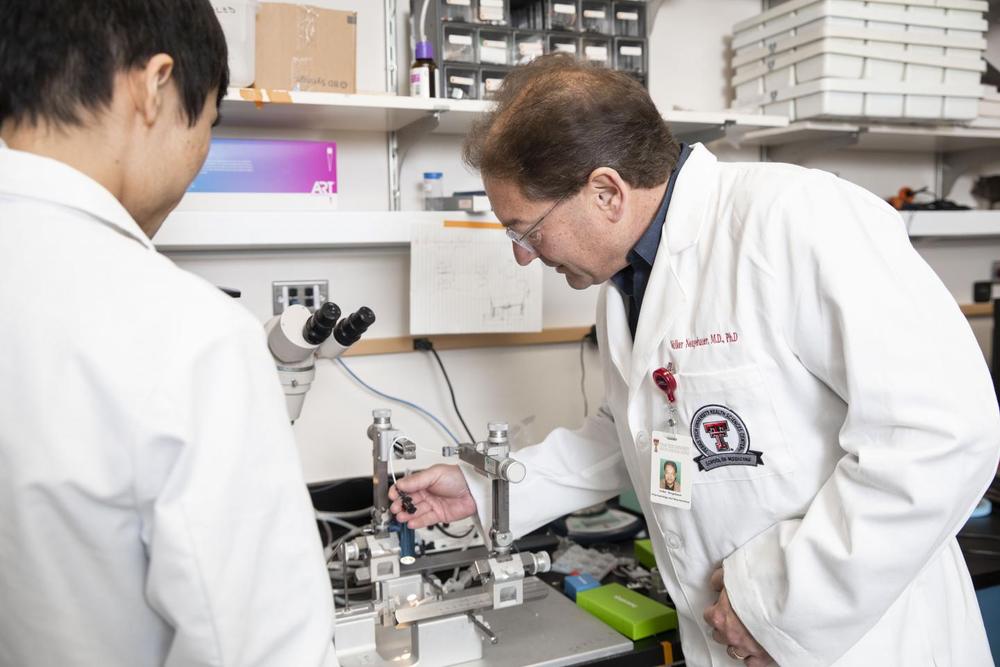Existing compound produces pain-relieving effects and relieves anxiety. Past pain research typically has focused upon the spinal cord or the peripheral areas of the nervous system located outside the spinal cord and brain. However, a research team headed by Volker E. Neugebauer, M.D., Ph.D., at the Texas Tech University Health Sciences Center (TTUHSC) School of Medicine recently investigated how some mechanisms in the brain contribute to pain. His study, “Amygdala group II mGluRs Mediate the Inhibitory Effects of Systemic Group II mGluR Activation on Behavior and Spinal Neurons in a Rat Model of Arthritis Pain,” was published recently by the journal Neuropharmacology. Mariacristina Mazzitelli, a TTUHSC research assistant and Ph.D. candidate, is the study’s lead author.
“Our group has been interested in understanding pain mechanisms, and our unique area of expertise is really understanding that changes in the brain contribute to the persistence, intensity and other side effects of pain,” Neugebauer said. “It is not just a sensation that let’s you know where it hurts and how intense the pain feels. It also causes anxiety, impairs quality of life and causes depression. We’re studying the brain because all of those things reside there.”
To better understand what pain-related changes may occur in the brain, and how to normalize those changes, Neugebauer’s study applied an arthritis pain model and focused on the amygdala, which are almond-shaped clusters located deep inside each of the brain’s temporal lobes. The amygdala is part of what is known as the limbic brain, a complex arrangement of nerve cells and networks that control basic survival functions, motivations and emotions like fear and play a central role in disorders like anxiety, addiction and pain.
